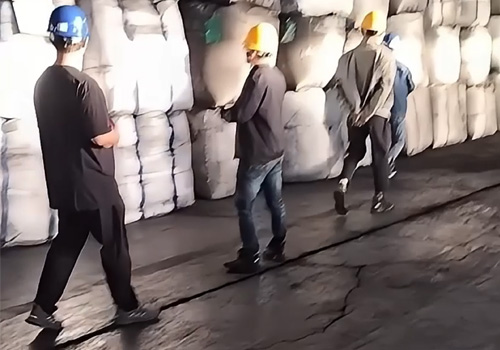Aug . 10, 2024 21:30 Back to list
Exploring the Production Processes and Innovations in Spherical Graphite Manufacturing Facilities Worldwide
The Rise of Spherical Graphite Factories A Key Player in the Battery Industry
In recent years, the demand for advanced battery technologies has skyrocketed, largely propelled by the electric vehicle (EV) revolution and the growing need for renewable energy storage solutions. At the heart of these advancements lies spherical graphite, a critical material that enhances battery performance. As a result, spherical graphite factories have emerged as pivotal players in the supply chain of high-performance batteries.
Spherical graphite, derived from natural graphite, possesses unique properties that make it an ideal anode material for lithium-ion batteries. Its spherical shape allows for efficient packing and leads to higher conductivity and better lithium ion intercalation compared to traditional flake graphite. This results in batteries that not only charge faster but also have a longer cycle life, making them indispensable for electric vehicles, consumer electronics, and energy storage systems. As the global push for sustainable energy solutions accelerates, the demand for spherical graphite has surged, prompting the establishment of specialized factories.
The process of producing spherical graphite involves several steps, starting with the procurement of high-quality natural flake graphite. The flake graphite undergoes a series of purification and milling processes to achieve the desired purity and size. Afterward, the material is spheroidized, typically through high-temperature treatment, which enhances its spherical appearance and optimizes its electrochemical properties. This intricate process requires advanced technology and expertise, underscoring the importance of specialized factories dedicated to spherical graphite production.
spherical graphite factories

Geographically, the production of spherical graphite is concentrated in regions with abundant natural graphite deposits, such as China, Canada, and Brazil. China currently dominates the global supply chain, producing a significant percentage of the world’s spherical graphite. However, as governments worldwide push for local sourcing of critical materials to secure supply chains and reduce dependence on foreign sources, new factories are emerging in other regions, including North America and Europe. This trend not only helps diversify the supply chain but also fosters local economies and job creation.
Sustainability is another driving force behind the growth of spherical graphite factories. As the world moves towards greener technologies, production processes are being redesigned to minimize environmental impact. Many modern factories are implementing measures to reduce water usage, lower carbon emissions, and utilize renewable energy sources for their operations. Additionally, recycling and reprocessing initiatives are being explored to reclaim spherical graphite from old batteries, further enhancing sustainability in the industry.
The role of spherical graphite factories extends beyond just production; they are also pivotal in research and development. Companies are investing in innovative techniques to enhance the performance of spherical graphite, such as surface modifications and hybrid materials. Collaborations with universities and research institutions are becoming increasingly common as the industry seeks to push the boundaries of battery technology. Through these partnerships, factories can create next-generation materials that cater to the evolving needs of the battery market.
In conclusion, spherical graphite factories play a crucial role in supporting the surging demand for high-performance batteries in an era marked by the transition to electric mobility and renewable energy. With advancements in technology, a focus on sustainability, and an emphasis on research and development, these factories are well-positioned to lead the charge towards a cleaner, more efficient future. As we continue to explore innovative energy solutions, the importance of spherical graphite in the battery industry cannot be understated, marking these factories as key contributors to a sustainable energy landscape.
-
Eco-Friendly Granule Covering Agent | Dust & Caking Control
NewsAug.06,2025
-
Fe-C Composite Pellets for BOF: High-Efficiency & Cost-Saving
NewsAug.05,2025
-
Premium Tundish Covering Agents Exporters | High Purity
NewsAug.04,2025
-
Fe-C Composite Pellets for BOF | Efficient & Economical
NewsAug.03,2025
-
Top Tundish Covering Agent Exporters | Premium Quality Solutions
NewsAug.02,2025
-
First Bauxite Exporters | AI-Optimized Supply
NewsAug.01,2025
